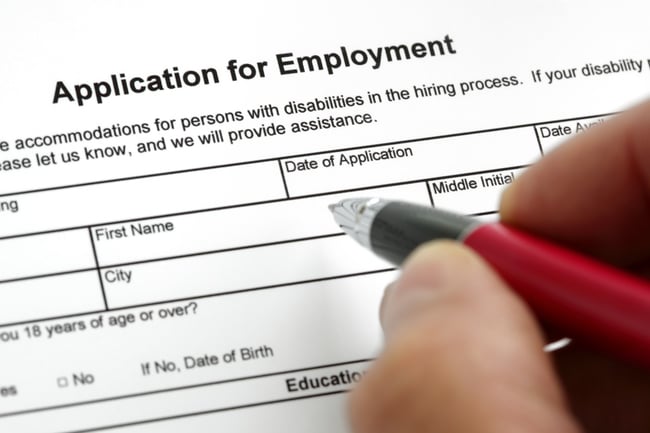August 18, 2021 | Human Resources
Practical Tips for Maintaining HR Compliance & Workforce Engagement
As the saying goes, your employees are your most valuable assets. As such, your manufacturing business needs to properly support them across all phases of their tenure with your organization. This entails following pertinent HR compliance policies, adhering to California law, and enhancing your workforce’s overall engagement. With so many facets to consider, how can you know you’re following all guidelines? This article will give you some foundational and practical tips for maintaining HR compliance and boosting workforce engagement.
Quick Links:
- What is HR Compliance in the State of California?
- Policy Development Requirements
- Operational Processes
- Workforce Enhancement
- CMTC Exclusively Serves California’s Manufacturers as Part of the MEP National Network!
What is HR Compliance in the State of California?
There have been several policy and legislative updates to HR compliance regulations in California this year, including pay data reporting, requirements for time off, minimum wage increases, and more. For example, employers with at least 26 employees must pay workers at least $14 an hour. Employers with fewer than 25 employees must pay at least $13 per hour.
Measures have also been taken to expand paid family or medical leave - employers with at least five employees must provide up to 12 workweeks of unpaid job-protected leave for workers to bond with a baby, take medical leave or care for relatives—including a child, parent, grandparent, grandchild, sibling, spouse or domestic partner. SB 1383 broadens the California Family Rights Act (CFRA), which previously granted this leave only to employees at businesses with at least 50 employees.
Policy Development Requirements
There are multiple, comprehensive policies your manufacturing organization should have established, including those that are protective, such as:
- At-Will: Create a policy statement for your at-will employment application & offer letter
- EEO: Include a policy statement in your job postings and company website that you are an Equal Opportunity Employer
- FEHA: Develop and communicate a policy notice to your employees on discrimination complaints as pertaining to the Fair Employment and Housing Act
- Pandemic Preparedness: Develop and distribute a Pandemic Preparedness plan, handbook, and guidelines
- Injury and Illness Prevention (IIPP): Follow OSHA guidelines and develop an Injury & Illness Prevention Plan
And policies that affirm zero tolerance in your manufacturing company, including:
- Discrimination: Create a policy statement for your company’s stance on anti-discrimination
- Harassment: Issue a policy statement detailing that your company has no tolerance for harassment of any kind
- ADA: Develop and communicate a policy notice to your employees the Americans with Disabilities Act (ADA) and define reasonable accommodations
- Workplace Violence: Develop and distribute a policy on no violence in the workplace
- Weapons: Incorporate a defined policy on no weapons
- Alcohol or Illegal Substance: Define and create policy guidelines with no tolerance for smoking, alcohol, or illegal substances
Operational Processes
HR compliance plays a critical role in establishing a fair and equitable workplace, spanning from the point of hiring a candidate to termination of employment. The following sections review a few key basics in ensuring due process from start to finish.
Hiring
- Ban the Box: Criminal History Information California law prohibits employers from obtaining any conviction history information during the application process; conviction history information cannot be sought until after a conditional offer of employment has been made. Once an employer has made a conditional offer of employment, there are still specific rules and restrictions on the type of information that can be obtained and what you can do with the information. Before you decide not to hire an applicant because of their criminal background, you must provide the applicant with specific notices and the opportunity to respond, in addition to other requirements.
- Prior Salary: California law prohibits employers from asking about a job applicant's salary history, including information on compensation and benefits. Employers also cannot rely on salary history information as a factor in determining whether to hire the applicant or how much to pay the applicant.

Checklist for Success:
Tip #1: Develop a checklist and define the job
Tip #2: Plan your recruitment strategy
Tip #3: Advertise the position
Tip #4: Create a candidate evaluation form
Tip #5: Screen resumes and revised/compliant applications
Tip #6: Conduct a phone screen
Tip #7: Schedule on-site interviews
Tip #8: Generate a written offer/signature requested
Tip #9: Conduct pre-employment checks
Tip #10: Build an onboarding plan
The job description should play a few important roles in that it clarifies an employee’s responsibilities, defines what is expected of an employee, provides a critical first step in the hiring or selection process, summarizes a clear objective of the role, and includes a meaningful duty statement as a valuable tool in orientating new employees to their role in the department.
Upon hiring, your manufacturing company’s onboarding process should define a critical component of hiring employees and lead to increased retention. This portion of the hiring process sets the tone for the position, the company, new-hire expectations, policies, and procedures, encourages a two-way communication process, provides a roadmap for success, and reinforces that all new hires want to do well.
Be sure to establish a checklist of expectations for the new hire, allow time and resources for pre-hiring paperwork, and define a New-Hire Orientation training on their first day. To help with bringing your new hire into the fold of your manufacturing company, incorporate a formal check-in process a the end of their first week, then after 30, 60, and 90 days.
Furthermore, creating an employee handbook can help your new hire transition into their position. This handbook reduces potential liability, although not legally required. Essentially it outlines policies and complaint procedures for all, establishes boundaries, and prevents misunderstandings. Thus it reduces time spent managing questions about what is allowed, creates consistency in how requests and benefits are handled, and even provides legal protections if practices are ever challenged in court
Wage Orders
In 2019, more than $9.27 billion owed to U.S. workers earning less than $13 an hour (private-sector, non-union) was pocketed by employers who forced arbitration on their employees. It’s estimated that over 4.6 million workers have experienced wage theft in the last year. Private attorneys recovered $467 million in wage and hour class action lawsuits.
Be sure you follow all wage and hour laws, understand and apply overtime laws, eliminate tip stealing, ensure all meal and break periods are firmly entrenched, and generally protect workers’ health and safety in your manufacturing organization.
How to Take Corrective Action
Corrective action in your manufacturing business should follow this general order of operations:
- Verbal Warning/Reprimand
- Written Warning/Reprimand
- Probation
- Suspension
- Leave with/without Pay
- Demotion
- Separation
When taking corrective action, be sure to have all your ducks in a row:
- Have an employee discipline form.
- Conduct a full and fair investigation.
- Get the facts. Be objective. Be clear and specific.
- Complete the form while the facts are fresh.
- Obtain the employee’s acknowledgment in writing.
- Allow the employee to explain the conduct. Be fair.
- Use the discipline process as a positive experience, if possible.
Termination Guidelines
Certain state and federal laws are in place that govern under what circumstances an employer may let an employee go. For example, employers are not allowed to fire a worker for a discriminatory reason, such as the worker’s race, color, sex, age, national origin, or disability. Employees may also not be fired in retaliation for asserting their legal rights. Should an employer violate one of these laws, it could find itself facing legal action by the fired employee.
California is an at-will employment state, as are most other states in the country. Under the at-will employment doctrine, the employer and employee relationship is voluntary and can be terminated by either party, at any time. There doesn’t need to be a cause for the termination and no notice is required. However, this does not give an employer the right to fire an employee in every circumstance. Therefore, employers should be aware of the exceptions that exist to the at-will employment doctrine.
On the other hand, at-will employment does not give an employer the carte blanche ability to fire an employee in every situation. Employees are protected under state and federal law from being fired for discriminatory reasons, as well as being fired in retaliation for asserting their rights. Employers are also required to adhere to the terms of an employment contract or union agreement. Employers that violate any of these employment laws may be found liable for the fired employee’s lost wages, benefits, and legal fees.
When terminating an employee, be sure to do the following:
- Prepare the final paycheck, including unused vacation pay.
- Document the situation. Explain it calmly & clearly to the employee.
- Conduct an exit interview to collect company property unless termination is urgent.
- Deactivate building, computer, tool access.
- Escort the employee to collect their personal property, if applicable.
- Do not threaten or retaliate.
- Contact authorities at the first sign of resistance or potential violence.
Workforce Enhancement

Employee Referrals
An employee referral program is a recruiting strategy in which employers encourage current employees, through rewards, to refer qualified candidates for jobs in their organizations. For example, new hires that are sourced via an employee referral program are more likely to stay with your company and 82% of employees rated Employee Referrals above all other sourcing options to yield the best ROI. Referred employees start their job sooner than hires from other sources; in fact, after 29 days for the former and after 55 days for candidates from career sites.
Employee referral programs are formal programs employers have instituted to encourage employees to refer candidates for jobs at the company. Referral programs benefit both the employer and the current employees. In some cases, a bonus can be earned if a referred candidate is hired. They can contribute to increased employee retention, and determine the value and budget (minimum to maximum) when implementing a program.
Rewards and Recognition for Stellar Employees
Rewarding and recognizing employees leads to greater employee engagement, which increases retention and helps create a more positive overall workplace. Incorporating a rewards and recognition program helps increase employee engagement, leading to many benefits for the company, including:
- Increases motivation
- Shows appreciation
- Encourages friendly competition
- Improves productivity
- Boosts employee retention
- Creates a positive workplace
CMTC Exclusively Serves California’s Manufacturers as Part of the NIST MEP National Network!
The National Institute of Standards and Technology (NIST) founded the Manufacturing Extension Partnership (MEP) in 1988 with the mission to enhance the productivity and technological performance of U.S. manufacturing. Through its collaborations at the federal, state, and local level, MEP Centers work with manufacturers to develop new products and customers, expand and diversify markets, adopt new technology, and enhance value within supply chains.
As part of the NIST MEP National Network, CMTC serves as a trusted advisor to small and medium-sized manufacturers (SMMs) to solve their HR problems and find solutions that keep their organizations safe and compliant.
Our goal at CMTC is to make sure the manufacturing companies we serve understand the most updated compliance measures and enforce them effectively to protect their employees and avoid non-compliance fines. We understand that compliance laws are constantly changing and may be difficult to keep up with, which is why our experts are here to help! Contact us today!
About the Author
Gregg Profozich
Gregg Profozich is a manufacturing, operations and technology executive who believes that manufacturing is the key creator of wealth in the economy and that a strong manufacturing sector is critical to our nation’s prosperity and security now, and for future generations. Across his 20-year plus career in manufacturing, operations and technology consulting, Mr. Profozich helped manufacturing companies from the Fortune 500 to the small, independents significantly improve their productivity and competitiveness.

